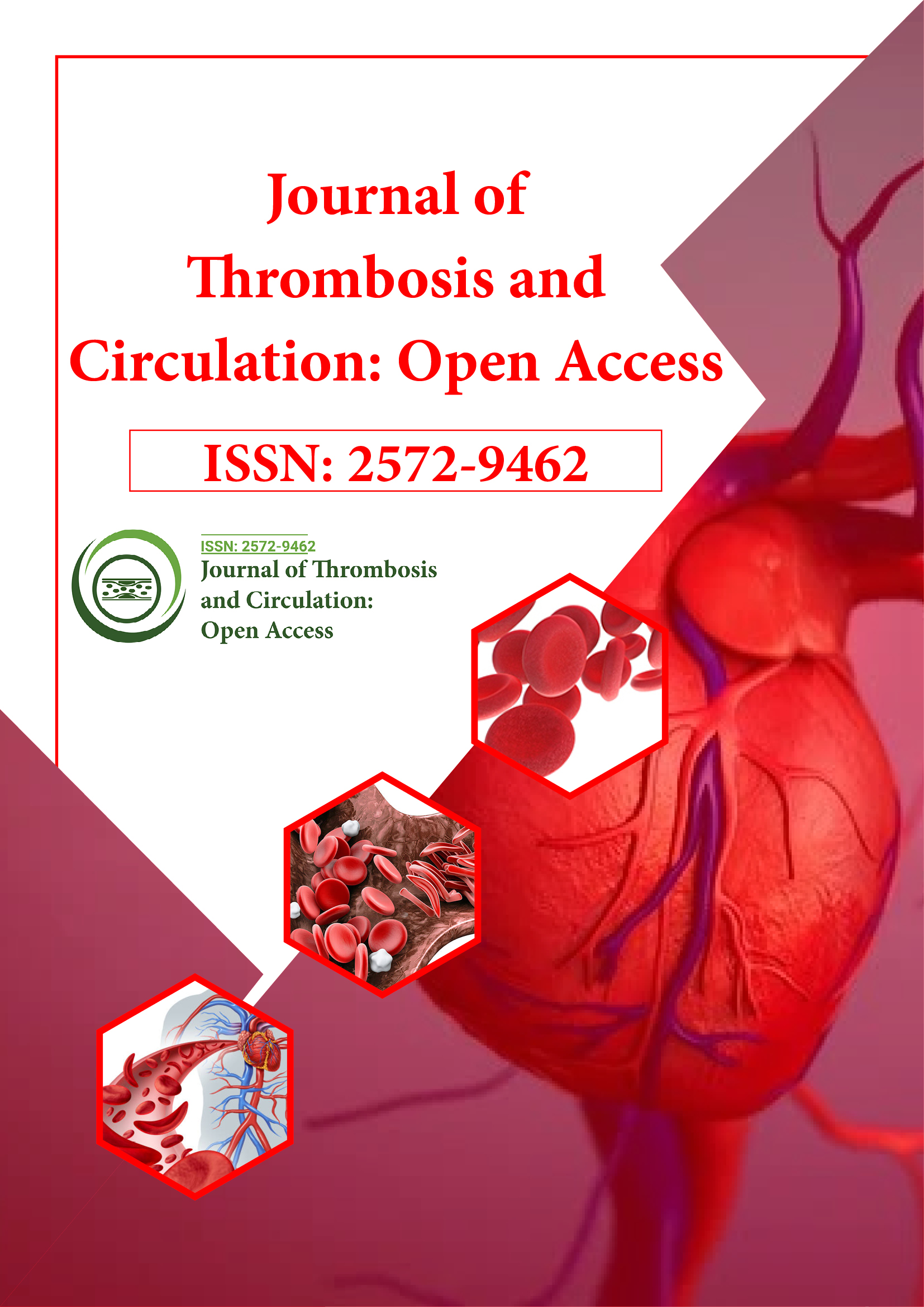Indexed In
- RefSeek
- Hamdard University
- EBSCO A-Z
- Publons
- Google Scholar
Useful Links
Share This Page
Journal Flyer

Open Access Journals
- Agri and Aquaculture
- Biochemistry
- Bioinformatics & Systems Biology
- Business & Management
- Chemistry
- Clinical Sciences
- Engineering
- Food & Nutrition
- General Science
- Genetics & Molecular Biology
- Immunology & Microbiology
- Medical Sciences
- Neuroscience & Psychology
- Nursing & Health Care
- Pharmaceutical Sciences
Commentary - (2024) Volume 10, Issue 3
Ovarian Vein Thrombosis: Insights into Epidemiology and Management
Konstantinos Stefanou*Received: 30-Aug-2024, Manuscript No. JTCOA-24-21421; Editor assigned: 02-Sep-2024, Pre QC No. JTCOA-24-21421 (PQ); Reviewed: 16-Sep-2024, QC No. JTCOA-24-21421; Revised: 23-Sep-2024, Manuscript No. JTCOA-24-21421 (R); Published: 30-Sep-2024, DOI: 10.35248/2572-9462.24.10.285
Description
Ovarian Vein Thrombosis (OVT) is a rare but clinically significant condition that requires heightened awareness due to its potential for serious complications, including pulmonary embolism and sepsis. Predominantly occurring in postpartum women, OVT is also associated with other hypercoagulable states, including malignancy, pelvic infections and hormonal therapy. The rarity of OVT often leads to delays in diagnosis, underscoring the need for increased clinical vigilance. The epidemiology of OVT highlights its predilection for women in the reproductive age group, particularly in the postpartum period. Approximately 80%-90% of cases are reported in this context, with the right ovarian vein being more commonly affected than the left. This right-sided predominance is attributed to anatomical factors, such as the lack of a valve in the right ovarian vein and its direct drainage into the inferior vena cava, which may predispose it to stasis and thrombosis.
The natural history of OVT, while often self-limiting when diagnosed early, can progress to severe complications if left untreated. The condition frequently presents with nonspecific symptoms, including lower abdominal or flank pain, fever and nausea, making it a diagnostic challenge. This ambiguity often necessitates a high index of suspicion, especially in postpartum patients presenting with these symptoms. Advanced imaging modalities, such as contrast-enhanced Computed Tomography (CT) or Magnetic Resonance Imaging (MRI), play a pivotal role in confirming the diagnosis by visualizing the thrombus and any associated inflammatory changes.
Management of OVT has evolved significantly, moving away from conservative approaches to more proactive treatment regimens aimed at preventing complications. Anticoagulation therapy forms the cornerstone of treatment, with Low-Molecular- Weight Heparin (LMWH) or Direct Oral Anticoagulants (DOACs) commonly used to reduce thrombus progression and embolic risks. Antibiotics are indicated in cases where infection is suspected, particularly in postpartum OVT associated with endometritis. In rare, refractory cases or when complications such as abscess formation occur, surgical interventions, including thrombectomy or ligation of the ovarian vein, may be necessary.
Despite advancements in diagnostic and therapeutic approaches, significant gaps remain in our understanding of OVT. The condition's rarity has resulted in a lack of robust epidemiological data and randomized controlled trials, leaving many aspects of its management based on expert consensus or extrapolated evidence from other thrombotic conditions. Moreover, the role of newer therapeutic modalities, such as catheter-directed thrombolysis, remains underexplored and warrants further investigation to define its utility in specific clinical scenarios. From a diagnostic perspective, greater awareness among clinicians is essential to improve early recognition and reduce delays. Incorporating OVT into the differential diagnosis of postpartum abdominal pain and adopting a multidisciplinary approach involving radiologists and hematologists can improve outcomes. Furthermore, developing standardized diagnostic criteria and management algorithms may help address the variability in current clinical practices.
The natural history of OVT also offers an opportunity for preventive strategies, particularly in high-risk populations. Prophylactic anticoagulation in postpartum women with multiple risk factors, including cesarean delivery and known thrombophilia, should be considered, though the balance between benefits and bleeding risks requires careful evaluation. Similarly, in patients with malignancy-associated OVT, an innovative approach to anticoagulation that accounts for both thrombotic and bleeding risks is paramount.
In conclusion, ovarian vein thrombosis, though rare, represents a critical condition that demands prompt recognition and effective management. Advances in imaging and anticoagulation therapies have significantly improved diagnostic accuracy and patient outcomes, but challenges persist due to its nonspecific presentation and the lack of high-quality evidence guiding management. Greater clinical awareness, combined with targeted research into the epidemiology, natural history and treatment of OVT, will create the path for improved care. Addressing these gaps will enhance our ability to identify at-risk individuals, streamline diagnostic workflows and optimize therapeutic strategies, ultimately mitigating the significant morbidity associated with this condition.
Citation: Stefanou K (2024). Ovarian Vein Thrombosis: Insights into Epidemiology and Management. J Thrombo Cir. 10:285.
Copyright: © Stefanou K. This is an open-access article distributed under the terms of the Creative Commons Attribution License, which permits unrestricted use, distribution, and reproduction in any medium, provided the original author and source are credited.
